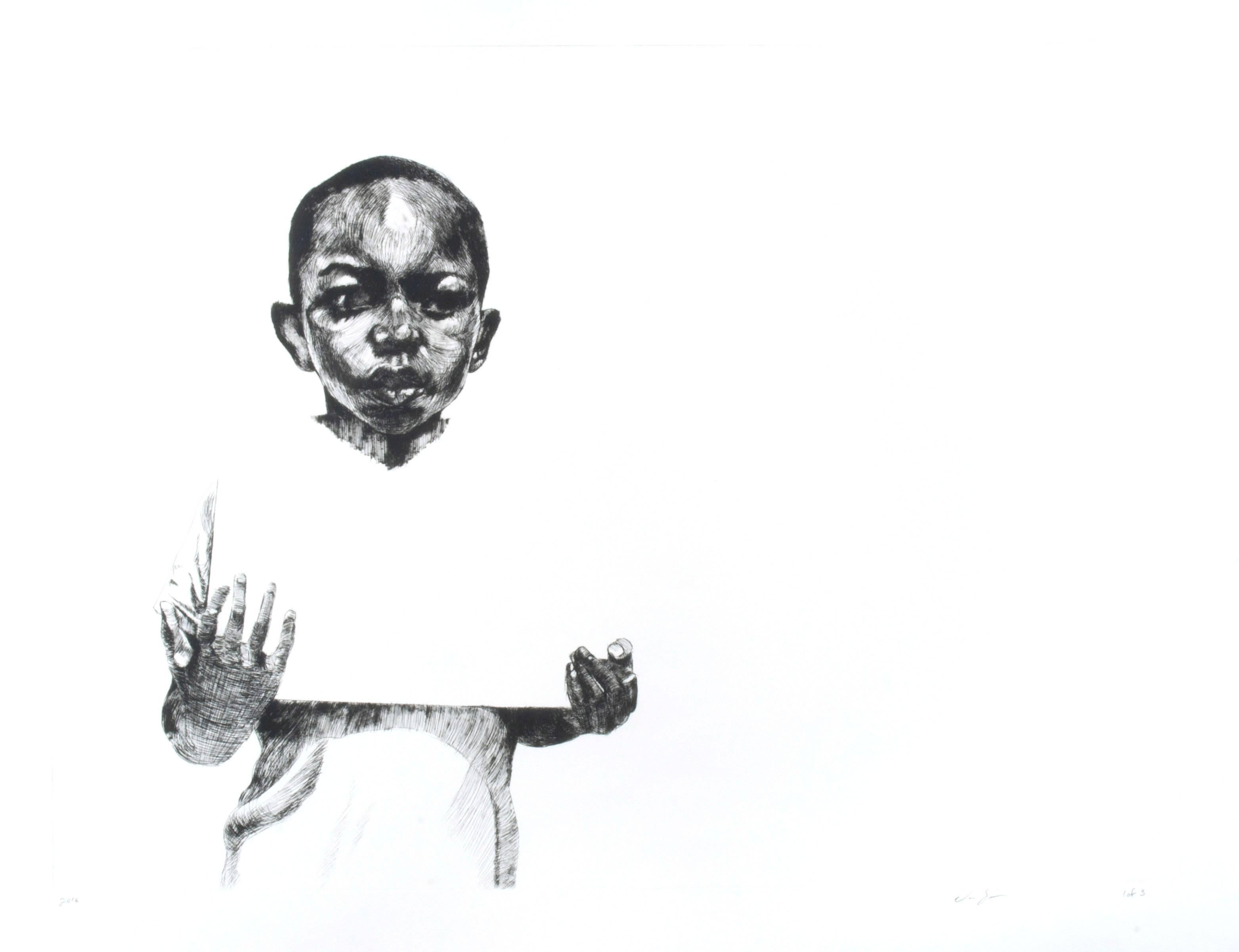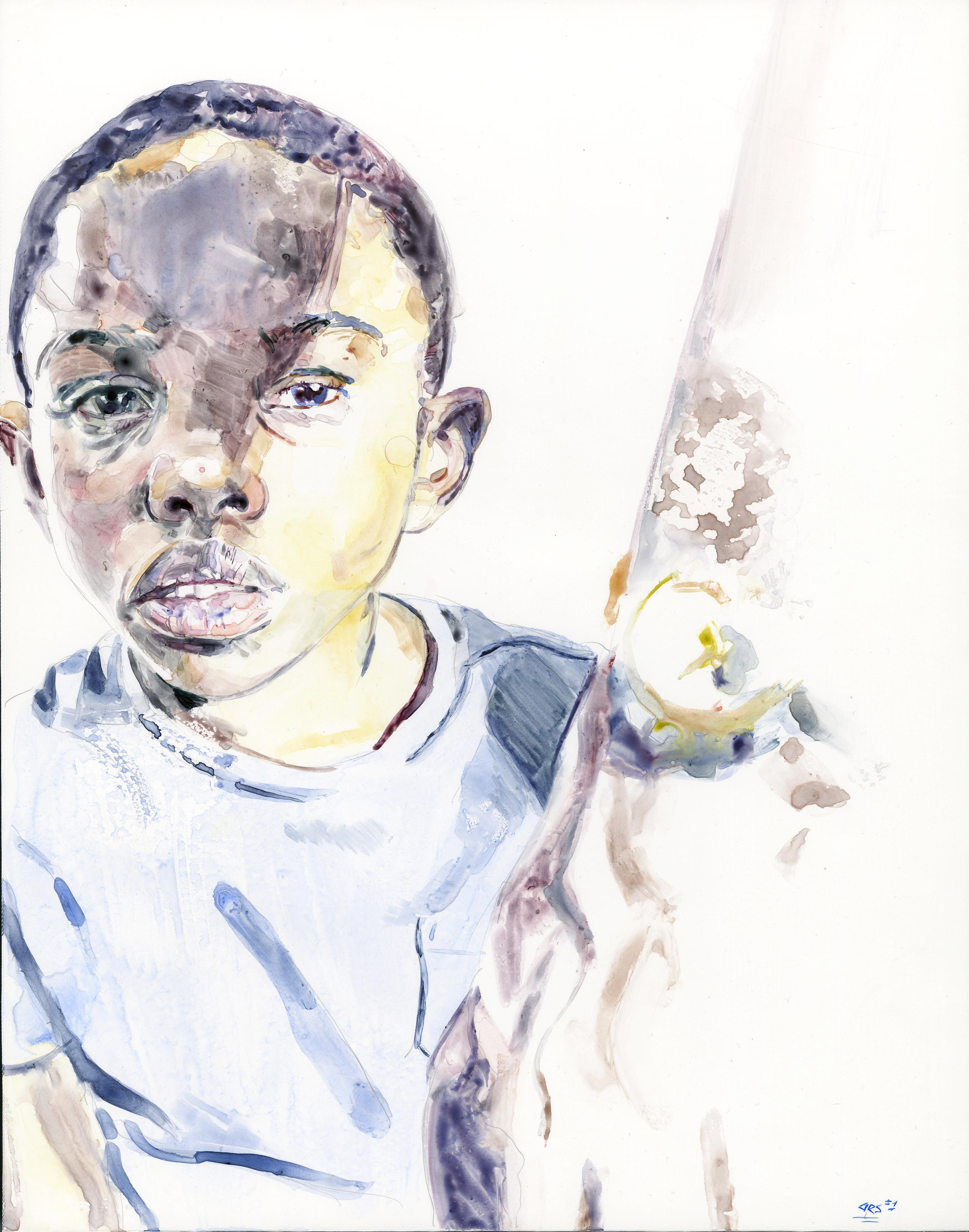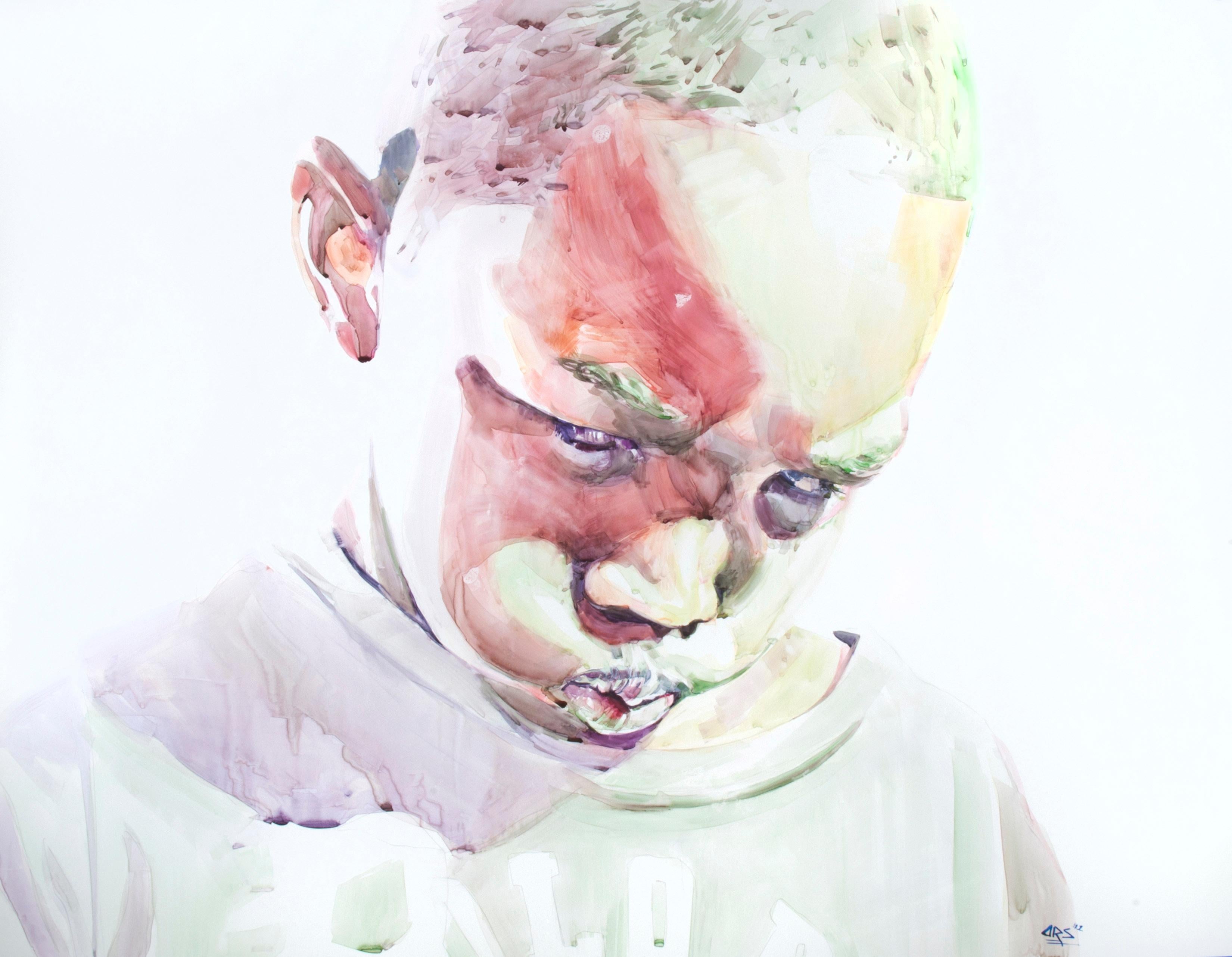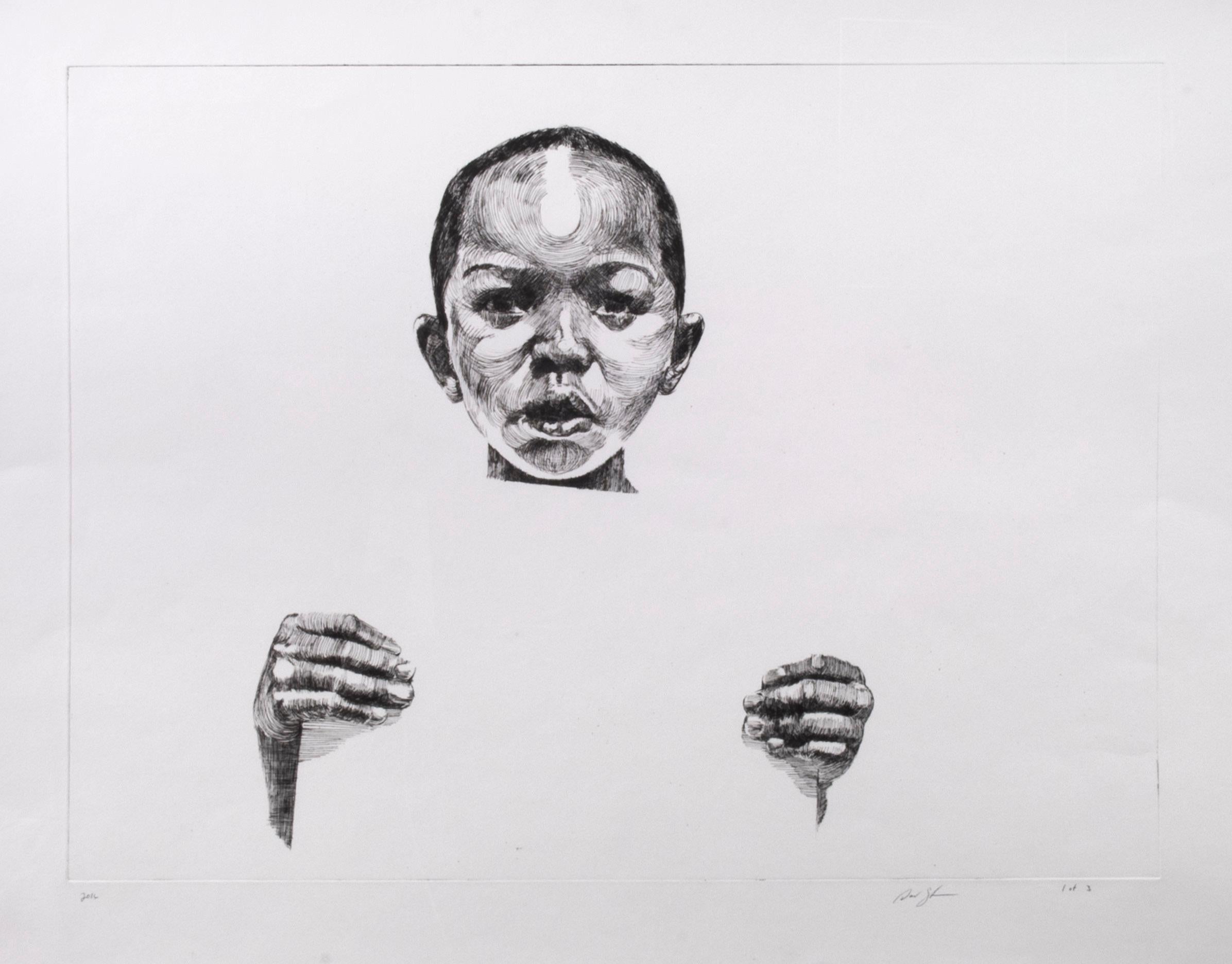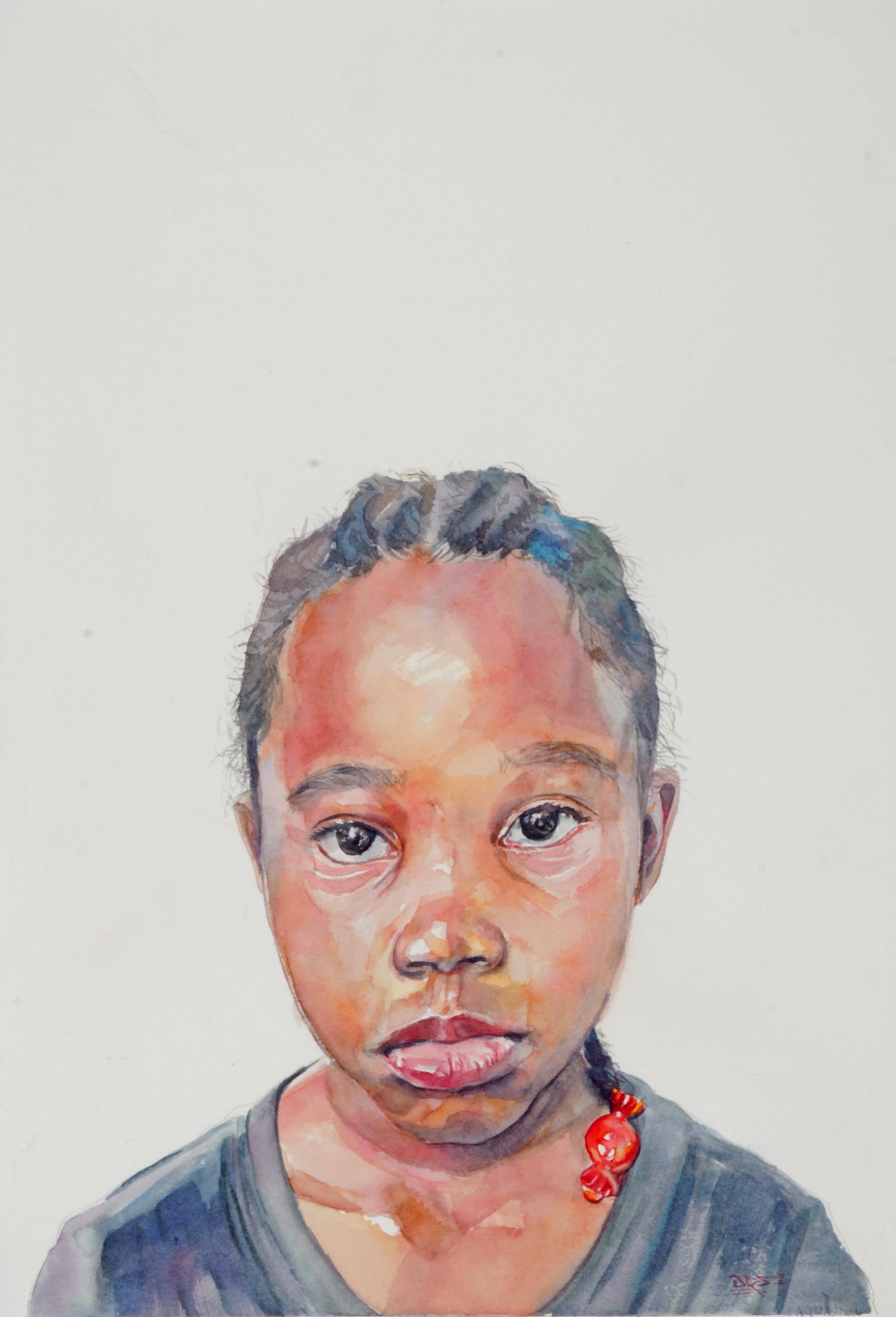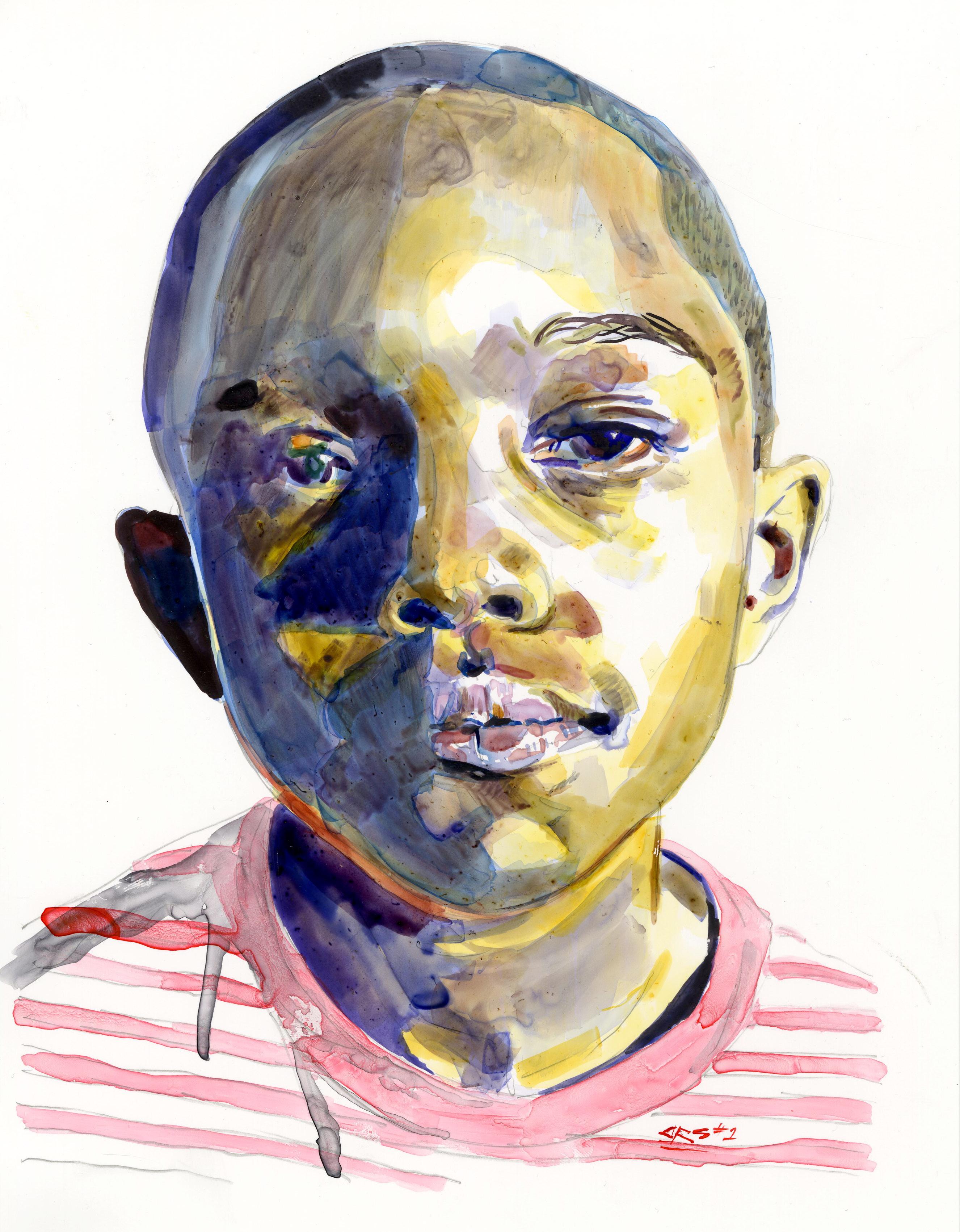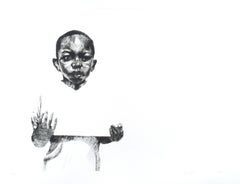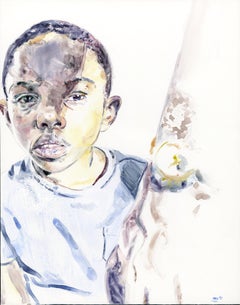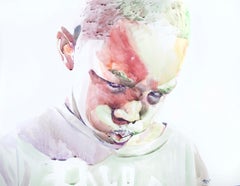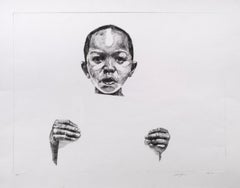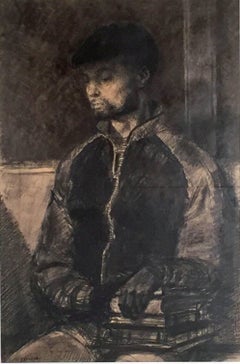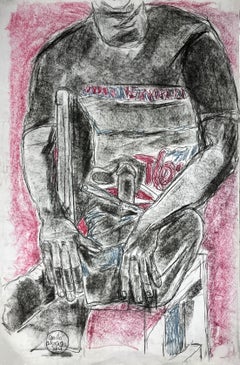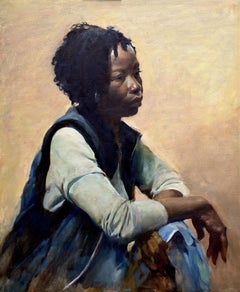Want more images or videos?
Request additional images or videos from the seller
1 of 8
Darius StewardDarius at 102022
2022
$600
£465.35
€527.46
CA$858.70
A$938.31
CHF 486.45
MX$11,209.45
NOK 6,190.39
SEK 5,795.67
DKK 3,938.65
About the Item
Darius at 10
Drypoint, 2022
Signed, titled and numbered in pencil
Printed by Rebekah Wilhelm
Her drystamp lower right
Published by the artist
Edition 14, plus proofs
Condition: Excellent
Plate/Image size: 4 x 5 7/8 inches
Sheet size: 11 1/4 x 9 7/8 inches
Darius Steward Biography
Darius Steward is establishing himself as a master of the medium of watercolor and large public murals. In 2018, Steward created two large public murals, “Breaker of Chains”, a 200’ by 6’ in height mural for the Midtown Cleveland/Cleveland State University and “Support” on Detroit Avenue in Cleveland. A new mural “Waiting Room” has been finished at SUMMA Health Care Tower, Akron, Ohio. Darius is currently working on a public sculpture commission for the Cleveland Public Library.
Stewards works are in the permanent collection of Minneapolis Institute of Art, Davis Art Museum at Wellesley College, Cleveland Museum of Art, Cincinnati Art Museum, Flint Institute of Arts, Joel and Lila Harnett Museum of Art (Richmond), Eskenazi Museum of Art (Indiana University), Stanley Museum of Art (University of Iowa),Swope Art Museum (Terre Haute), University of Delaware Museum, Akron Art Museum, Canton Museum of Art, Art NEO, CARTA, Cleveland Clinic Foundation, Summa Health Art Collection, Metro Health Hospital Collection, the Federal Reserve Bank, Cleveland, Art Collection, Rocket Loans Arena (Cleveland Cavaliers, NBA), the Thrivent Collection of Religious Art, Westmoreland Museum of American Art, and most recently the University of Miami Oxford (Ohio) Art Museum.
In addition, Stewards works are in private collections from California to New York to Canada.
Steward is the recipient of the The 2018 Emerging Artist Award of the Cleveland Arts Prize.
A painting by Steward was chosen by Michele Grabner, Curator for the juried Front International Triennial, “The Great Lakes Research”, Cleveland Institute of Art, Reinberger Gallery, July 21st - August 4th, 2018
Stewards first solo museum exhibition, Our Separated Selves, closed in 2018 at the Canton Museum of Art. The artist’s second one person museum exhibition Occupying A Space, opened at the Swope Art Museum opened on January 18 and closed on March 3, 2019. This major exhibition was displayed in three galleries and exhibited 54 works on paper.
Ms. Kaywin Feldman, then Director of the Minneapolis Institute of Art, wrote the following commentary regarding a donation of Darius’s work.
“As you well know, Steward uses his extraordinary skill as a watercolorist to add interest and drama to quotidian life. His vivid colors and unusual, eye-catching compositions will make his work a compelling presence in the museum’s galleries. I am particularly excited that this is the first work by Steward to enter Mia’s collection.”
Ms. Feldman assumed her new position as Director of the National Gallery of Art, Washington, on March 11, 2019.
In 2021, Darius was commissioned to create a series of sculptures for the Cleveland Public Library Eastman Reading Garden in downtown Cleveland. This marks the artist’s first public sculpture project and a new direction for this creative output.
“I often think of my kids when I think of progress. The idea of the future, of the possibility of something new happening, is what fascinates me about youth. I can see myself in them—I can see whole alternative ways of living.”
DARIUS STEWARD, 2021
Recent public mural projects include:
Summa Health: Akron OH, “The Waiting Room” (May, 2020)
Bowser Alley: Shaker Heights OH (Van Aken) (May 2020
POW WOW, Cleveland Walls, Rainey Institute: Cleveland, OH (August 2021)
SEE 2021)
Lee-Harvard Library: Cleveland OH (August 2021)
- Creator:Darius Steward (American)
- Creation Year:2022
- Dimensions:Height: 4 in (10.16 cm)Width: 5.88 in (14.94 cm)
- Medium:
- Movement & Style:
- Period:
- Condition:
- Gallery Location:Fairlawn, OH
- Reference Number:Seller: FA122251stDibs: LU14015763872
About the Seller
5.0
Recognized Seller
These prestigious sellers are industry leaders and represent the highest echelon for item quality and design.
Gold Seller
Premium sellers maintaining a 4.3+ rating and 24-hour response times
Established in 1978
1stDibs seller since 2013
824 sales on 1stDibs
Typical response time: <1 hour
Associations
International Fine Print Dealers Association
- ShippingRetrieving quote...Shipping from: Fairlawn, OH
- Return Policy
More From This Seller
View AllDarius II
By Darius Steward
Located in Fairlawn, OH
Signed in pencil lower right
Edition: 3 impressions
Signed, dated and annotated “1 of 3”
Exhibited: Zygote Press, Cleveland, 2016
Tregoning & Co. 2017
Category
2010s Contemporary Figurative Prints
Materials
Drypoint
Influences #2
By Darius Steward
Located in Fairlawn, OH
Signed with the artist's initials and dated lower right
Watercolor on Yupo paper, mounted to board
From Steward's Influences Series
Darius Steward is establishing himself as a mas...
Category
2010s Contemporary Portrait Drawings and Watercolors
Materials
Watercolor
E
By Darius Steward
Located in Fairlawn, OH
E
Watercolor on Yupo paper, 2018
Signed with the artist's initials (see photo)
Condition: Excellent
Archival framing with OP3 Acrylic
Sheet/Image size: 30 x 38 inch...
Category
2010s Contemporary Figurative Drawings and Watercolors
Materials
Watercolor
$8,500
If you're too cool, you lose.
By Darius Steward
Located in Fairlawn, OH
Signed, dated and numbered in pencil
Printer: Rebekah Wilhelm, Zygote Press, Cleveland
Created at Zygote Press, Cleveland, 2015, while the artist was an Artist in Residence.
Exhib...
Category
2010s Contemporary Figurative Prints
Materials
Drypoint
Stages II
By Darius Steward
Located in Fairlawn, OH
Stages II
Watercolor on Arches paper, 2021
Signed with the artist's initials lower right (see photo)
Signed with the artist's Yummy blindstamp lower right
Signed, titled and dated in...
Category
2010s Contemporary Portrait Drawings and Watercolors
Materials
Watercolor
DRS2 at 7
By Darius Steward
Located in Fairlawn, OH
Signed with the artist's initials lower right
Color ink on Yupo paper
Framed in a white shadowbox presentation.
Image: 12 x 8 7/8"
Category
2010s Contemporary Portrait Drawings and Watercolors
Materials
Ink
You May Also Like
STUDENT
By Joseph Hirsch
Located in Portland, ME
Hirsch, Joseph (American, 1910-1980). STUDENT. Charcoal drawing on paper, not dated, but before 1980. Signed lower left, "J Hirsch." 17 1/2 x 11 1/4 inches (framed to 25 x 19 inches)...
Category
1970s American Realist Portrait Drawings and Watercolors
Materials
Charcoal
$1,200
At the Show
By Jerome Myers
Located in New York, NY
Jerome Myers (1867-1940), At the Show, etching and drypoint, c. 1920, signed in pencil lower right. In good condition, with margins (paper losses upper corners), faint ink marks and ...
Category
1920s American Realist Figurative Prints
Materials
Drypoint, Etching
Camilo. Figurative, Drawing
By Celso José Castro Daza
Located in Miami Beach, FL
Drawing on paper is his basic work tool, some are sketches of his surviving works, others are sketches of moments he documents.
Undefined by medium, Celso Castro’s works each carry...
Category
2010s Contemporary Portrait Drawings and Watercolors
Materials
Pencil, Crayon, Paper
"At Long Last" (2020), Oil on Linen Human Portrait Painting by Burton Silverman
By Burton Silverman
Located in Denver, CO
Burton Silverman's "At Long Last", an oil on linen portrait painting dated 2020, is a masterful realist capturing of a contemplative young woman with short hair in modern casual clothes...
Category
2010s American Realist Still-life Paintings
Materials
Linen, Oil
This is not how it is suppose to be, Painting, Oil on Canvas
By Christine Cousineau
Located in Yardley, PA
A portrait of an African American Male. The expression on his face suggests that he is mildly bewildered with things. He questions the way life i...
Category
2010s Contemporary Paintings
Materials
Oil
Larry No. 5
Located in Columbia, MO
Larry #5
2016
Charcoal on paper
22 x 10.5 inches
Jessica Keiser currently resides in New Haven, Connecticut. Keiser's style is Naturalistic, concerned with the intimacy of the cre...
Category
21st Century and Contemporary American Realist Figurative Drawings and W...
Materials
Charcoal
More Ways To Browse
Maurice Evans
Maurice Utrillo Original
Millais Art Prints
Milton Green
Mucha Flowers
Murakami Kansei
Nico Vrielink On Sale
Otomi Art
Pablo Picasso Two Women
Paolo E Francesca
Paul Arno
Paul Klee On Sale
Pencil Drawing Print Lithograph
Peter Doig Fisherman
Peter Max Cosmic Runner
Peter Max God Bless America
Peter Max Two Sages
Pharrell Williams Vintage
